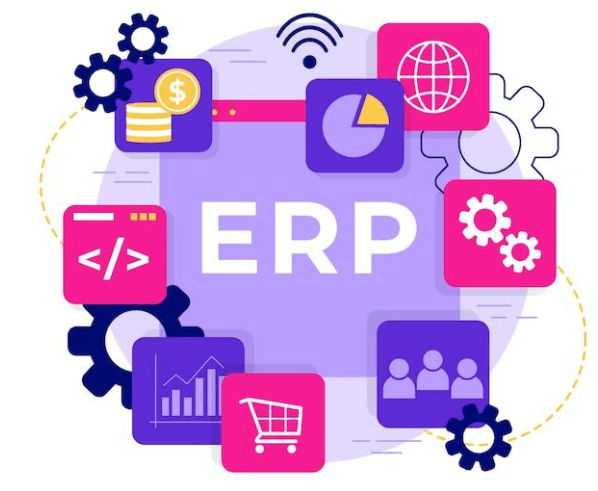Why User Acceptance Testing Is Critical for a Successful ERP Implementation

The success of an ERP implementation is crucial for businesses, as it's directly linked to improved efficiency, productivity, and profitability. After all, ERP systems integrate different business processes and functions to provide a unified view of the organization.
As a result, they are integral to decision-making and resource utilization. However, research suggests that more than 50% of the ERP implementations fail. In fact, most implementations accrue costs that are three to four times more than the envisioned budget. It's here that user acceptance testing becomes critical.
- What is User Acceptance Testing (UAT)?
- What makes UAT so important for ERP implementation?
- What are the benefits of UAT for ERP implementation?
- Best Practices for effective user acceptance testing (UAT) in ERP implementation
- What are some risks to be aware of?
- How does ACCELQ help in realizing success with UAT in ERP projects?
What Is User Acceptance Testing (UAT)?
In User Acceptance Testing (UAT), the end-users perform testing to ensure that the system meets their requirements and expectations.
UAT is typically conducted after the system has gone through all the other stages of testing. This includes unit testing, integration testing, and system testing.
In essence, UAT aims to validate the system's functionality, usability, and performance in a real-world scenario. It allows end-users to provide feedback on the system's behavior and identify any issues or gaps in functionality. By doing so, UAT helps to ensure that the system meets the end-users needs and is ready for production release.
What Makes UAT So Important for ERP Implementation?
UAT is especially critical for Enterprise Resource Planning (ERP) implementation due to the complex and multifaceted nature of ERP systems. ERP systems often involve integrating multiple business processes, departments, and functions into a single system, which can be challenging to implement correctly. To this end, UAT allows end-users to validate that the ERP system functions to understand if they meet their business requirements.
In effect, UAT is essential for mitigating risks associated with ERP implementation, such as system failures, financial losses, and reputational damage. In addition, by testing the system in a real-world scenario, UAT can uncover any functional or technical issues that may have been missed during the development or testing phases. This way, UAT serves as an integral step to increase users' ERP adoption and satisfaction.
What are the Benefits of UAT for ERP Implementation?

Drives Users' Involvement
Since UAT entails users' involvement, it provides businesses with concrete insight into the system's real-world behavior. Also, as outlined above, this involvement directly contributes to increased adoption.
Outlines Discrepancies and Suggests Workflow Improvements
UAT helps identify any discrepancies or gaps in functionality and suggests workflow improvements. Through UAT, end-users can identify any issues or areas for improvement and provide feedback that can be used to optimize the system's performance and align it with the end-user's needs. This ensures that the system functions as intended and meets the business requirements.
Increases the ROI
UAT helps users establish the vision and goals for their ERP adoption. Since it focuses on people, UAT positions users as primary stakeholders for ERP improvement. When the issues or areas for improvement are identified, businesses can take action to enhance the system's usability, leading to increased user satisfaction. This ultimately leads to a higher return on investment for the ERP implementation.
Work on BIG ideas, without big work.
Simplify test automation with our Unified platform for Enterprise stack across Web, Mobile, API, Desktop & Backend

Best Practices for Effective User Acceptance Testing (UAT) in ERP Implementation
To carry out UAT for ERP implementation, follow these best practices.
Take Care of the Prerequisites
Before starting UAT, it's essential to ensure that the necessary prerequisites are in place. This involves:
- Identifying business requirements
- Establishing a UAT environment
- Completing integration and unit testing
- Ensuring that the test environment mirrors the production environment
Define the Scope
The scope of UAT testing needs to be defined, including which business processes and functionalities will be tested and which business users will be involved. To that end, the scope should align with the organization's overall goals and objectives for the ERP implementation.
Define Timelines
Clear timelines need to be communicated to the business users, specifying when UAT will be carried out and the duration of the testing phase. This ensures that the business users remain prepared and available to participate in UAT.
Optimize Test Execution
UAT testing can be optimized by automating documentation, workflows, and defect management. This helps to reduce manual effort and ensures that the testing proceeds efficiently and effectively.
Evaluate the results
After completing UAT, it is necessary to evaluate the results to identify any functionality gaps or issues. To begin with, it is vital to prioritize and address any identified issues promptly, either by fixing them or by documenting acceptable workarounds.
What Are Some Risks to Be Aware of?
While User Acceptance Testing (UAT) is critical to ensure the success of ERP implementation, there are some risks to be aware of during the testing phase.
No Efficient Testing Structure Could Prove Detrimental
Testing can become disorganized and ineffective without a clear plan and structure, leading to missed issues and unwanted delays. This can ultimately result in a suboptimal ERP implementation.
Existing Product-Related Issues Could Fail UAT
Another risk is the possibility of existing product-related issues transpiring during UAT. These issues may be due to a lack of adequate testing in the previous development phases or the complexity of the ERP implementation. If found during UAT, these issues can cause delays in the testing process and may require additional development work for resolution.
No Priorities Set - Delays Transpiring, Idle Time
Not setting priorities can cause delays and pave the way for idle time while testing. Therefore, it's crucial to have a well-defined plan with timelines and priorities to ensure UAT's efficient and effective completion.
Resource Constraints
Resource constraints can also be a risk during UAT. Without the necessary resources, including the appropriate personnel and technology, UAT could suffer delays. As a result, the business might have to accrue higher costs to adjust for the project's timeline and efficiency.
How Does ACCELQ Help in Realizing Success with UAT in ERP Projects?
ACCELQ provides an intuitive and user-friendly interface, allowing business users to participate in testing with minimal training. This helps to drive user involvement and ensure that UAT testing proceeds effectively. Besides, ACCELQ offers a range of automated testing capabilities, including test case design, test data management, and defect management. This further helps to optimize test execution.
ACCELQ integrates with a range of ERP systems, including Salesforce, SAP, Oracle, and Microsoft Dynamics, allowing organizations to test ERP implementations with ease.
In sum, ACCELQ provides a comprehensive solution for user acceptance testing for ERP implementations, helping organizations drive user involvement, optimize test execution, and successfully adopt ERP systems. Contact our experts to learn more about we can help.
Related Posts
 Batteries Included with Usability Testing Methods
Batteries Included with Usability Testing Methods
Batteries Included with Usability Testing Methods
 Overcoming Challenges in Cloud Testing
Overcoming Challenges in Cloud Testing




































